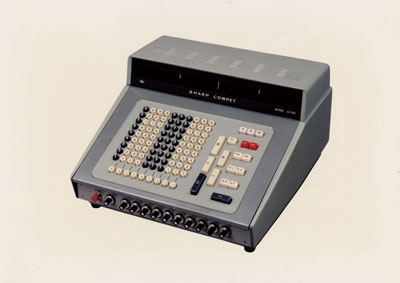

- Home >
- Artifacts of IP Heritage >
- 2010 >
- CS-10A
CS-10A

| Manufactured in | 1964 |
|---|---|
| Manufactured by | Hayakawa Electric Co., Ltd. (Sharp Corporation) |
| Owner | Sharp Corporation |
| Location of historical materials | Sharp Technology Innovation Museum 2613-1 Ichinomoto-cho, Tenri-shi, Nara 632-8567, Japan |
| Visitor information | visit by appointment only |
| Contact | Sharp Technology Innovation Museum Tel.+81-50-5433-4635, +81-50-5433-1543 |
CS-10A, first manufactured and commercialized in 1964, was the world's first all-transistor diode electronic desktop calculator. This model was a forerunner of many smaller and more popular calculators. Development started when a research laboratory was established in 1960 by Hayakawa Electric Co., Ltd. (currently Sharp Corporation). The initial plan was to develop a large scale computer. However, the objective of the project was switched to development of a small calculator that could be used “whenever, wherever, and by whomever,” like an abacus. As a result, development of COMPET CS-10A was completed in 1964, the year of the Tokyo Olympics. A full-key input and a 20 digit display using Nixie tubes was adopted. The calculator contained 4,000 parts, including 530 germanium transistors, 2,300 diodes, had dimensions of 420 x 440 x 250 [mm] and a mass of 25 kg. The number of operations that could be handled per second was 80 for addition, 60 for subtraction, 2.5 for multiplication and 1.2 for division. The price of 535,000 yen, comparable to a popular automobile at that time, was very expensive for purchase for personal use. However, the fast operating speed and quietness compared to conventional mechanical calculators made CS-10A popular both in Japan and overseas. The success of this small, all-transistor diode calculator made a large impact on the industry, and led to the trend of making calculators smaller, lighter, and more often incorporating ICs and LSIs.
